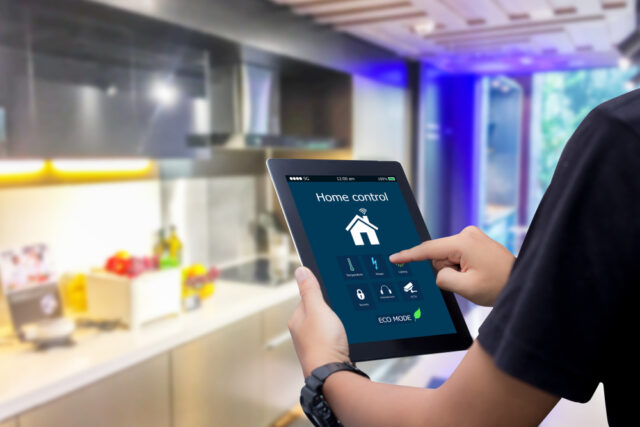
Six ways to protect the “smart home” from cyberattacks
Six ways to protect the “smart home” from cyberattacks
Advertising of high-tech housing (“smart home”) promises comfort and convenience of use thanks to smart locks, lighting systems, integrated household appliances in the overall Internet system. At the same time, there is the threat of cyberattacks. Modern criminals do not need to break into the house with locks’ help because you can remotely intervene in the work of the house to get a lot of information and open the locks. Let’s talk about what a smart home is, the protection of which requires a comprehensive approach.
Smart devices Market 2021 for Home
A home where consumers can interact with their devices by voice is no longer futuristic. The segment of the IT market of smart homes and offices is snowballing, although the price policy remains relatively high.
With reference to experts, we can say that in 2022-25 the world number of all new buildings will be equipped with “smart” systems, which equals at least 10%.
A new stage of development will then follow: there will be “smart” housing complexes and cities, which will introduce unified intelligent management platforms (housing, energy, public safety, transportation).
Similar innovations in Russia are carried out by the Digital Economic program, which contributes to implementing the plan and the annual growth of the Russian market of smart homes by 10-15% over the next 5-7 years.
Named the most dangerous “smart” devices for home
The hallmark of smart home devices is the connection to the wireless network and the Internet. This is how the Internet of Things (IoT) network is formed and expanded. Last year, 2020, the market of smart devices of the Russian Federation grew seven times.
At the same time, experts of the Institute of Integrated Security and Special Instrumentation of MIREA and experts of the ANO “Dialogue” claim that “smart” home devices threaten users’ privacy on a par with PCs and smartphones.
The list of “smart” devices that can cause personal data breach into the network:
- Multi-cookers
- Refrigerators;
- Coffee makers;
- Robot vacuum cleaners
- Speakers
- TVs
- light bulbs, sockets, climate thermostats with Wi-Fi;
- IP video cameras and surveillance systems.
The principle of the data breach: the main flow of data passes through sensors and cameras. It is easier for attackers to hack into a smart refrigerator to access a phone or computer through the home network.
It is also possible to collect and process data in the background. In this case, the user does not even know about the hacking of the gadget. Accordingly, the more “smart” devices are in the house, the more opportunities there are for hackers.
Top 6 ways to protect your home from cyberattacks
The following is noteworthy: cybersecurity is important both for the end-users of smart home systems and for the dealers who install them. Let’s delve into cybersecurity. How to protect a smart home?
Reliable manufacturer
One of the main criteria for choosing equipment should be the reliability of the manufacturer. And the main advice that a security expert can give is never to buy cheap noname equipment at Chinese sites. Here are nine reasons in favour of this statement.
When buying components of a smart home, pay attention to the level of security, protection capabilities, the number of customizable parameters, as well as the warranty and return policy.
Regular name and password change
Smart home devices are required to have a “change of username and default password” option. It is necessary to apply strong passwords that cannot be guessed and generated from the simplest algorithms (date of birth, name, surname). It is also recommended to change passwords regularly.
Protection from infection
Remote control of high-tech dwellings is done through smartphones and computers. Accordingly, hackers always try to gain access to checkpoints through other devices. Therefore, the issue of protecting PCs and mobile phones with the latest antivirus software has become even more important than before.
Software update
The update, like a protection system, applies even to new devices. The explanation is simple: the firmware version depends on the date of its manufacture, and if it took more than 1-2 months before the end-user bought the device, the firmware is out of date.
You need to upgrade the software to the latest version during the setup. Also, all smartphone devices and apps need to be updated regularly (at equal recommended intervals).
Safe Wi-Fi
To ensure maximum security on the Wi-Fi channel, you need to opt out of the public network favouring a data plan or a secure VPN.
2FA
A smart home needs a two-factor authentication system. Additional proof of identity when connected to a device or service is an excellent security solution.
TIP: When purchasing smart home items, ask for possible 2-factor authentication settings.
Results
The main problem of smart devices and high-tech premises is possible cyberattacks. The security system should take into account the prospects of scaling and be ready for hacking.
Today, a regular smartphone is used for remote control of the “smart” home and office. Home protection should consist of a set of activities for device control (PC, smartphones, mobile apps) and every item with access to the Internet.








